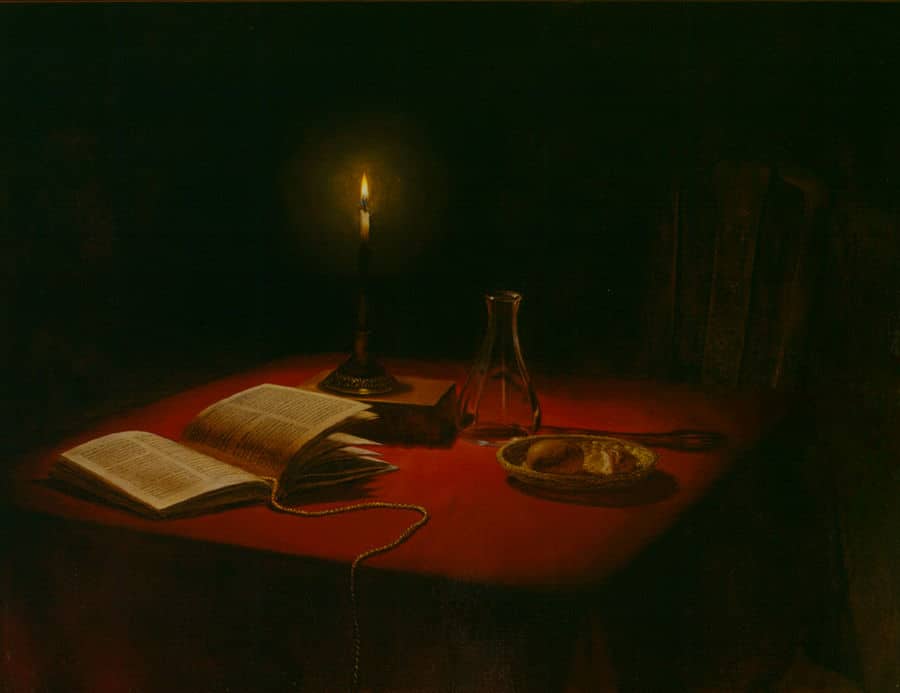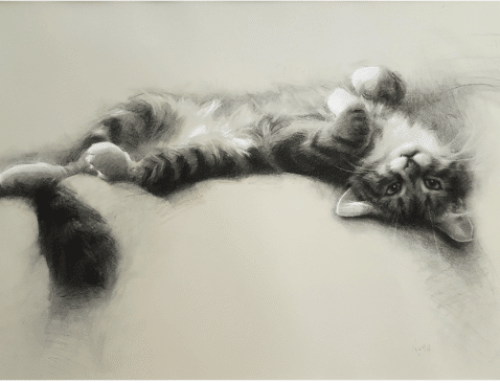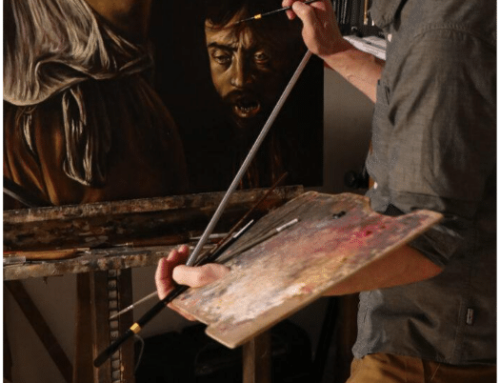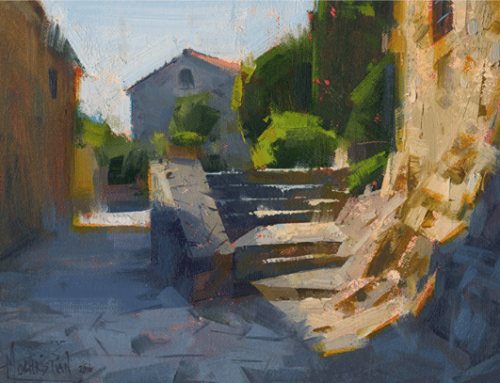By Virgil Elliott
In today’s issue of Inside Art, our guest artist Virgil Elliott gives us a first-person account of his quest to master what he calls Timeless Quality in art.
Many artists have told me they were inspired to pursue art early in life after seeing a painting that impressed them so much that they felt they just had to know how to create that kind of art themselves.
Usually it’s an oil painting from centuries past touched by the timeless quality of great works of art. The visual impact of such a work is so powerful that we need no explanation to convince us of its merits or why it is something we should love.
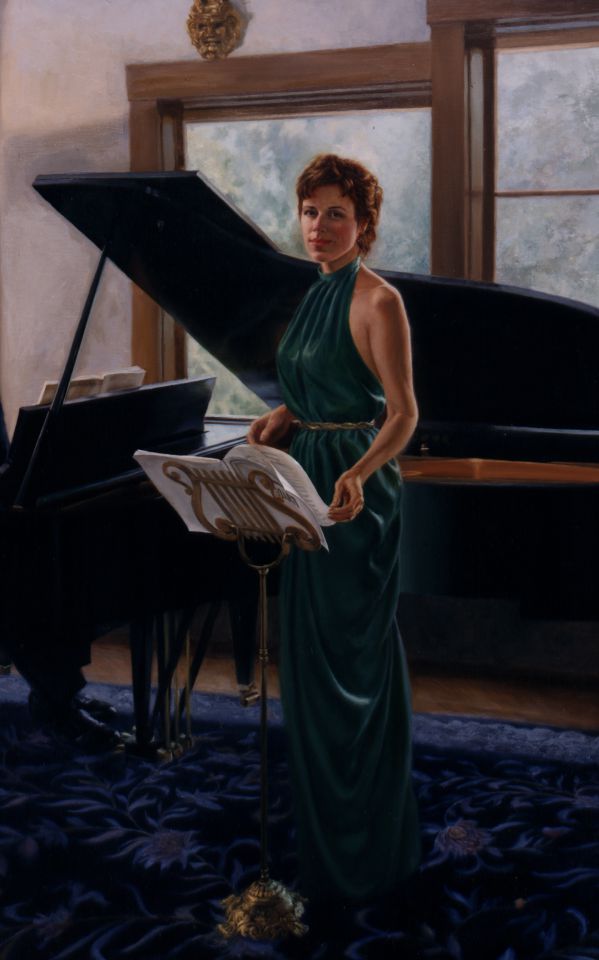
Virgil Elliott, Oil on canvas 54 x 36 inches, 1992
Unfortunately, the great artists of the past rarely wrote instruction books to help us learn how to do it ourselves. It would seem reasonable then, to seek a teacher of the classical methods. However, until quite recently, a great many art classes in colleges and universities were little more than indoctrination sites for the “modern art” orientation that scorned technical knowledge and discouraged young painters from pursuing it. To concern ourselves with such matters, we were told, would stifle our creativity.
Timeless quality was dismissed as kitsch. A great many young people who might have become fine artists were dissuaded or denied the instruction they’d hoped would lead them to mastery.
I encountered this myself in the 1960s in one institution after another. Unlike most of the other students, however, I had been drawing since early childhood obsessively and had been inspired by the Old Masters in museums. I had definite ideas, and realistic imagery with timeless quality is what I wanted to master. I was already a good draftsman and a better painter than my instructors wanted any of us to be, but I wasn’t interested in abstract expressionism or any other subphylum of the avant-garde.
After trying several institutions with no satisfaction, I became increasingly outraged at having been essentially cheated out of the money I’d paid to take classes that proved worse than worthless. It was just so wrong, and I resolved to seek and find the information I needed on my own. I would practice diligently for as long as it might take, and when I reached a high enough level of ability, I would help anyone learn to create compelling works of art in a realistic mode.
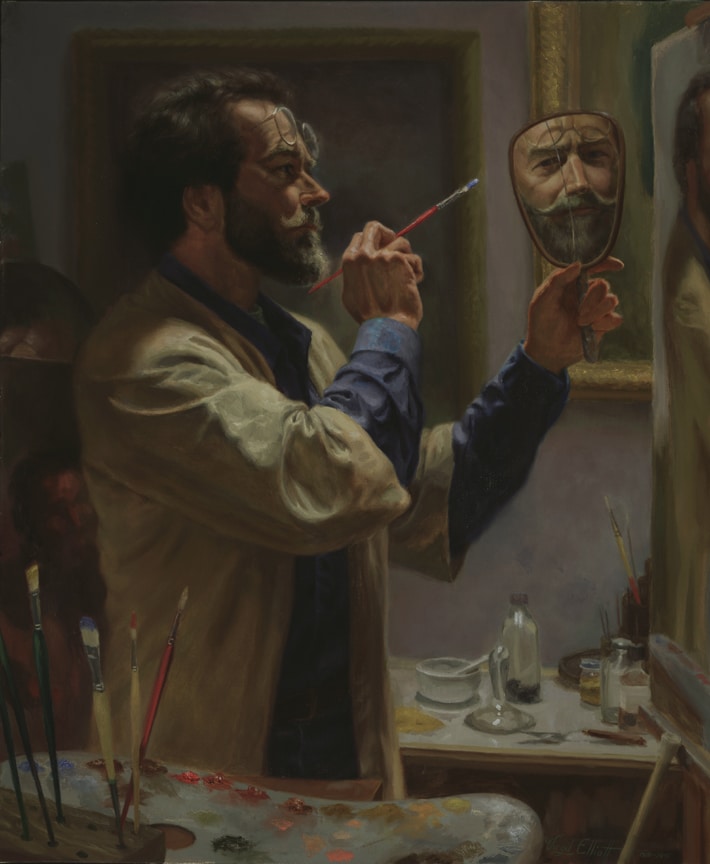
Virgil Elliott, self portrait with two mirrors
During the 1980s, I was teaching private art classes at a local gallery when I was asked to recommend a book that encompassed my teaching. I explained that there wasn’t one I could recommend without reservation; I knew of none that covered everythinfg I was teaching. Their unanimous reply was, “THEN YOU HAVE TO WRITE ONE!!!” At that point I remembered the promise I had made to myself in 1967 and realized that yes, I did have to write a book. And so I have.
Traditional Oil Painting was first published in 2007, subsequently updated in 2019, and published in a new edition by Echo Point Books. It has been adopted as a teaching manual by a number of art academies and even a few universities in various parts of the world. And among my former students, there was a fellow named Eric Rhoads, who recently engaged me to make an instructional video based on the most important chapter in my book.
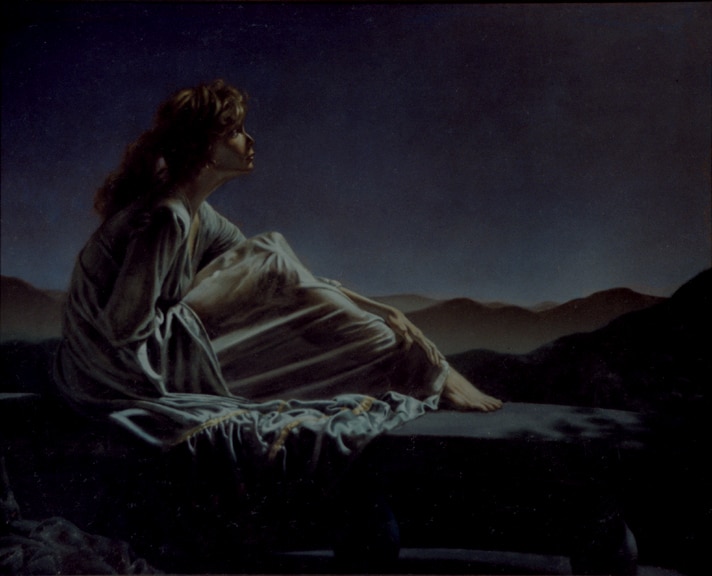
Virgil Elliott, Dreamer, oil on canvas
Today, the academic world has improved considerably. In a delicious twist of irony, the attitude once promoted so aggressively, that the ideas, standards and fashions of previous centuries are passé relics of days gone by, now applies equally to the Twentieth Century art world’s ideas. By their own standards, they’re out: irrelevant, no longer valid, passé.
What remains is the pursuit of timeless quality, which continues to inspire people to aspire to create Quality art themselves.
The human psyche includes many intrinsic qualities beyond the influence of fashion. Art that touches them will endure.
Virgil Elliott teaches his technique for painting oils in the video Traditional Oil Painting, the companion to his bestselling hardcover book. A bundle of the book and DVD is also available.
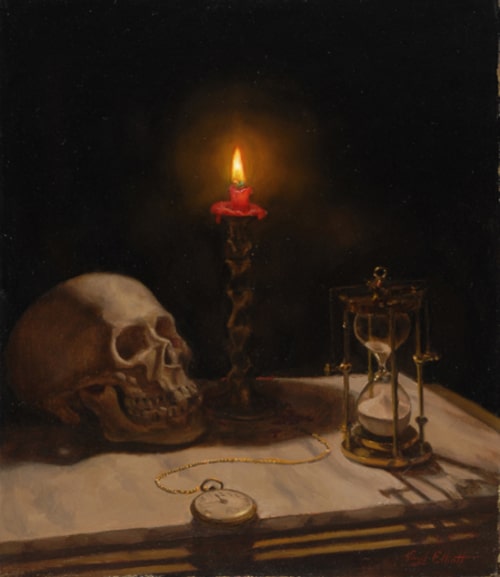
Virgil Elliott, Yorick, oil

